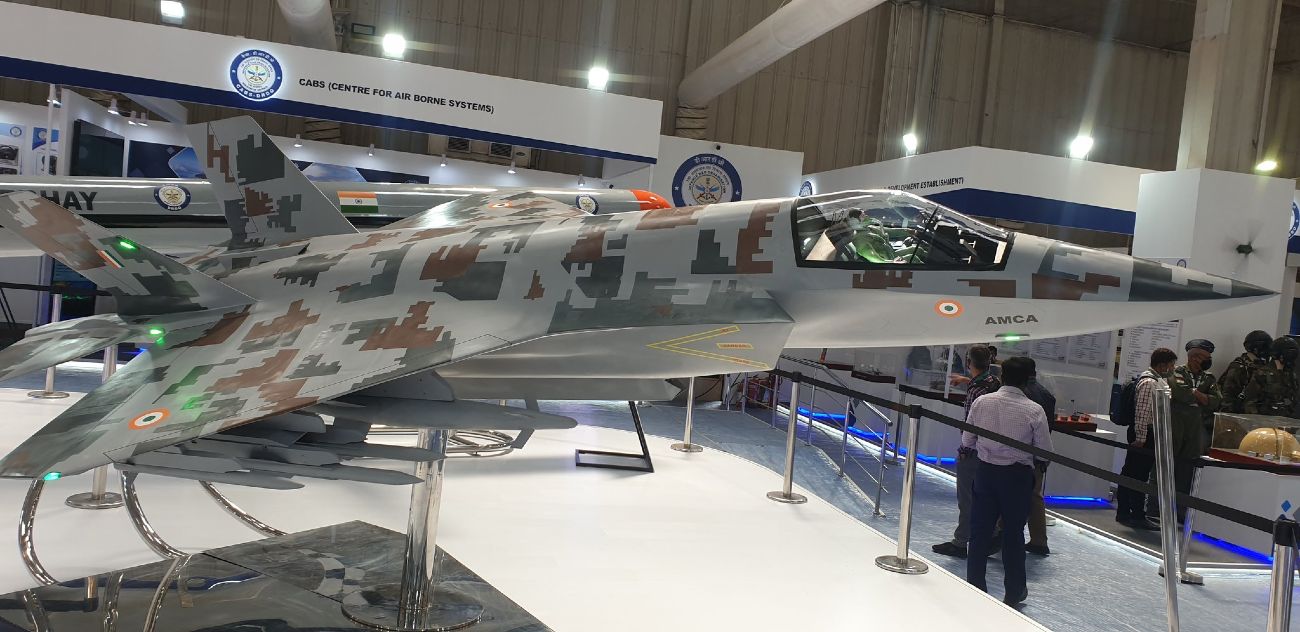India’s Cabinet Committee on Security approved the project to develop 5th-Gen Advanced Medium Combat Aircraft (AMCA) for the Indian Air Force on March 7.
The AMCA will be developed by the Defence Research & Development Organisation (DRDO). The Aeronautical Development Agency will develop the stealth jet and the associated technology in partnership with different private and public sector agencies.
Despite starting early, India will try joining the elite league of nations that have developed (US, China & Russia) or developing (South Korea and Turkey) fifth-gen warplanes.
EurAsian Times recollects an earlier analysis by Indian Air Force veteran Vijainder K Thakur, who lightly critiqued the program for its delays and questioned if the AMCA would really be a 5th-gen aircraft.
The timeline was first projected to the IAF in 2019. Despite their full support for an indigenous stealth aircraft, the IAF’s top officials viewed it as ambitious. In July 2020, the IAF called it ‘very tight.’
However, senior DRDO and HAL officials overlooked the IAF’s qualms. In January 2021, HAL Chairman R Madhavan said, “The prototype of the aircraft is likely to be ready by 2026 & its production could start by 2030!”
In September 2021, Girish S Deodhare, Programme Director ADA, upped the ante by projecting the first flight in 2025! Deodhare said, “We are moving to a critical design review by the middle of next year with the roll-out planned in 2024 and the first flight planned in 2025.”
Dr. AK Ghosh, project director of AMCA, stated during DefExpo-2022, “Once the project sanction is received, the first prototype can be rolled out in three years and the first flight in one to one and half years after that.”
The IAF, which has long been associated with DRDO & HAL, remained doubtful.
In November 2022, the Chief of the Air Staff, Air Chief Marshal VR Chaudhari, advised “prudence.” He advised foreign tie-ups as a fallback for developing “alternative systems & sensors” in case indigenous development slips off the timeline.
What the CAS said may have had an impact because, on February 14, 2023, DRDO chairman Samir Kamat said that the first flight of the AMCA “may take seven years and the induction can be done in ten years from now.”
While conceding a slip in the first flight timeline from 2027 to 2030, Kamat stuck to the 2035 induction target.
Will AMCA Be A 5th-Gen Aircraft?
More significant than the difficult-to-swallow DRDO/HAL projected timeline is that the AMCA projected to be inducted by 2035 may not be a 5th-generation warplane. It will be a 4.5 gen fighter.
AMCA is proposed to be developed in two phases. Phase 1 development will result in AMCA Mk-1, powered by the US GE-414 engine. Phase 2 development will result in AMCA Mk2, which will feature an advanced, more powerful engine to be developed in collaboration with a yet-to-be-chosen foreign partner.
AMCA Mk-1 will lack at least three defining 5th-generation fighter engines.
- Supercruise
- Supermaneuverability
- Sensor fusion
Additionally, AMCA Mk-1 will feature limited stealth. AMCA is inspired by the F-35, which has no rear aspect radio frequency and stealth but does feature a suppressed IR signature. The AMCA will feature no rear aspect stealth – neither RF nor IR.
Using the 98 kN GE F414 engine instead of a 110 kN engine as planned when designing AMCA rules out supercruise; lacking thrust vectoring rules out supermaneuverability, and large exhaust nozzles without IR suppression rule out rear-aspect stealth.
Sensor Fusion
Fifth-generation fighters are designed to penetrate heavily contested adversary airspace and locate targets, relaying targeting information and coordinates to other air, land, and sea-based weapon systems. To penetrate heavily contested airspace undetected and ferret out targets, a 5th-generation fighter requires good stealth and situational awareness using sensor fusion.
Sensor fusion fuses inputs from various onboard sensors—radar, IR, and optical—into a single coherent display. Upgraded 4th-generation fighters, such as Su-30MKI and LCA Mk-1A, feature varying degrees of sensor fusion, but not enough to provide situational awareness.
DRDO aims to field Stage 2 (situation awareness) sensor fusion with MWF LCA Mk.2. Fifth-generation fighters are expected to feature Stage 3 (Decision assist) or Stage 4 (Automated decision) sensor fusion.
‘Decision assist’ situational awareness includes automatic prioritization of threats to assist the pilot. ‘Automated decision’ situational awareness includes prioritizing and automatically engaging threats.
DRDO is still grappling with developing capable RF, IR, and Optical sensors. Sensor fusion will follow sensor development. It will be long before it can field Stage 3 and Stage 4 situational awareness.
The CAS was likely recommending foreign collaboration for developing sensors and sensor fusion when advising prudence in November 2022.

The Need To Be Realistic
Based on their track records and penchant for over-projection, there is little doubt that DRDO and HAL leadership will be forced to push back timelines and seek performance concessions due to technology shortfalls during the AMCA project.
As stated earlier, DRDO/HAL officials are likely aware of the pitfalls but are driven more by the need to procure funding from the government to safeguard their organizations’ future than by the need to strengthen the nation in the immediate context.
From the point of view of the IAF, the urgency and importance of acquiring manned stealth fighters mandate CCS approval for the AMCA project. Supercruise, supermaneuverability, and situational awareness can always be added to a stealth platform later, as well as evolving technologies such as loyal wingman & drone swarm control.
While giving its go-ahead to the project, it is important that the CCS be aware of the pitfalls and remain alert to the impact of project delays on the IAF’s combat capability. The nation can afford to wait for the AMCA but cannot afford to let its guard down.
To deter adversary adventurism, the IAF needs operational stealth fighters and counter-stealth AD radar systems within the next five years, not when the projected timelines are breached.
- OPED By Vijainder K Thakur, a retired IAF Jaguar pilot.
- VIEWS PERSONAL OF THE AUTHOR
- Article republished with updated information